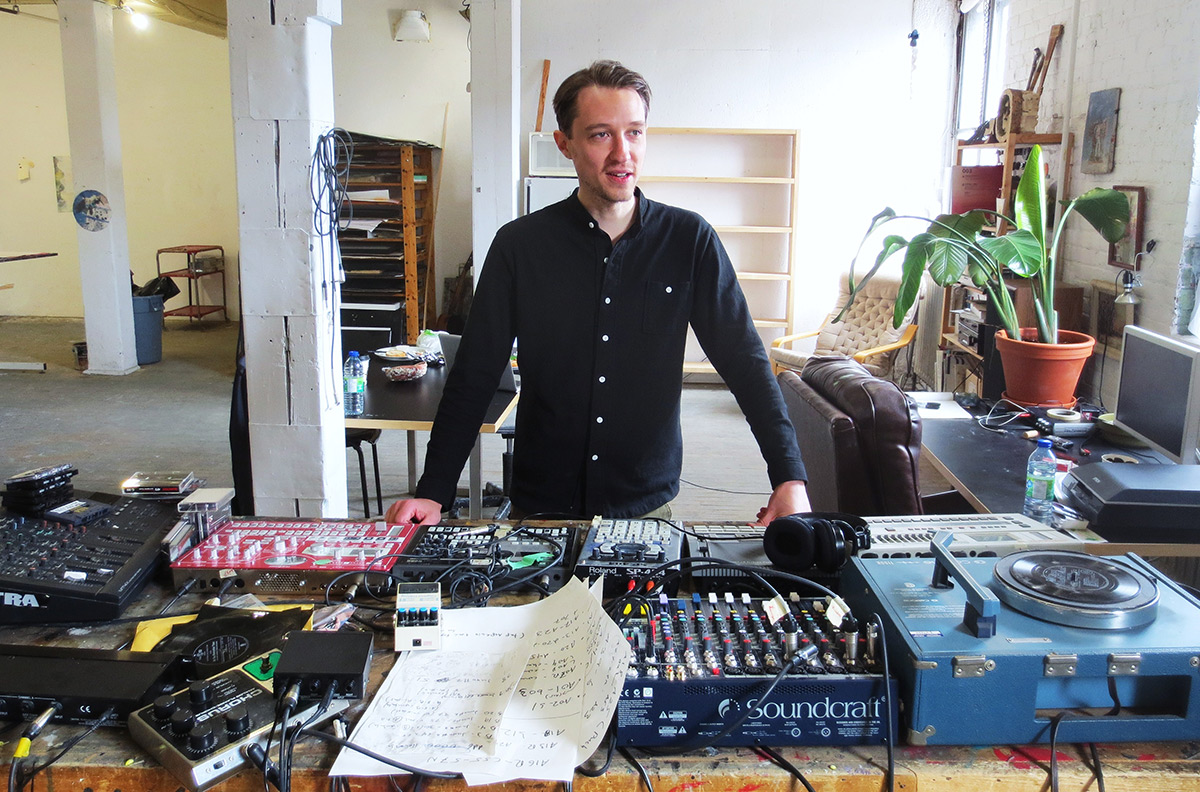
For Montreal-based painter Jean-François Lauda, becoming an artist seems like it was a foregone conclusion. Lauda is a self-taught painter who comes from a long line of artists, including his grandfather, Georges Lauda, who worked as a graphic designer at the CBC and produced several public artworks that can still be spotted around Montreal. “He also did some public works for the Montreal subway system around 1966, but they’re at stops in the north of the city, which isn’t trendy yet, so I don’t think people really know about them,” says Lauda with a chuckle. As for his own work, Lauda’s paintings seem to grow out of Quebec’s rich painting tradition, especially the Automatistes. Lauda’s approach to paint application is characterized by a gradual process of accumulation and erasure, which results in compositions that display the process of their own making. Often using a muted palette – “my colours are rarely straight from the tube,” he says – Lauda’s paintings feel raw and intuitive, their shapes and layers shifting gracefully between concealing and revealing.
Lauda’s work has been seen at the 30th Art contemporary symposium in Baie-Saint-Paul in 2012, as well as the Painting Project presented by Galerie UQAM in 2013. He has also shown at Erin Stump Projects and the VSVSVS gallery space in Toronto. Magenta editor Bill Clarke dropped by Lauda’s large Mile End studio in April, catching the artist between shows. Through February and March, he was part of a three-person exhibition at his Montreal gallery Battat Contemporary, and was just turning his attention to producing work for his first show in the U.S., at San Francisco gallery Romer Young, this September.
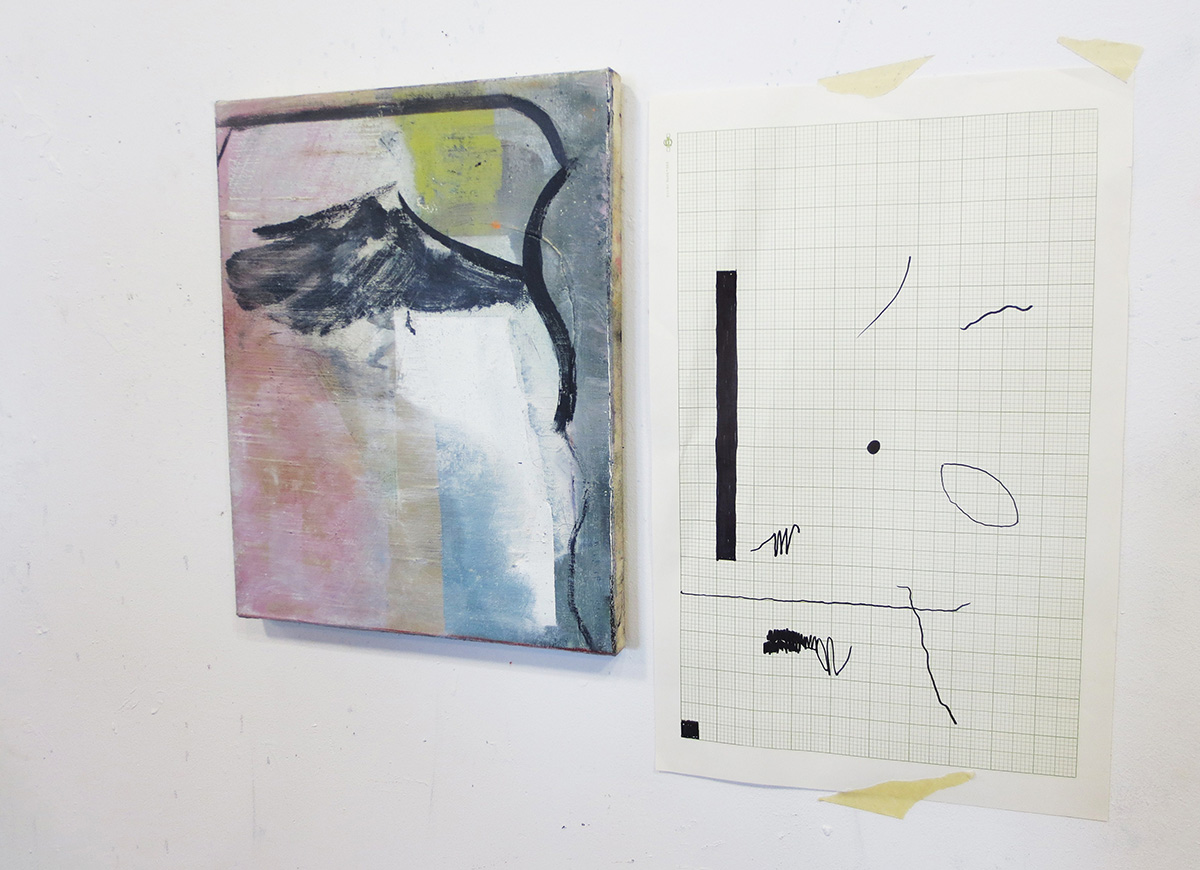
This drawing and painting have been hanging in the studio for the past two months. The painting is the last from a series I did at that size, and the grid paper is from supplies that were my grandfather’s that I inherited. I like being at that point when I don’t quite know exactly why certain things are coming out or how things are relating to each other. I’ll start by drawing a few lines and curves, and try not to let myself think about it too much. I don’t want to over-think right at the beginning; I want to surprise myself, or see if I can trick myself somehow. There’s something about this drawing that I like but don’t quite understand. Something is bugging me just enough in some of the twisted lines. It seems free of systems. I’m going to look at it every day and try to understand why there is this tension that I like, probably only to realize later that there is no way to ‘get it’. If there was a simple, understandable logic, it would be boring, right?
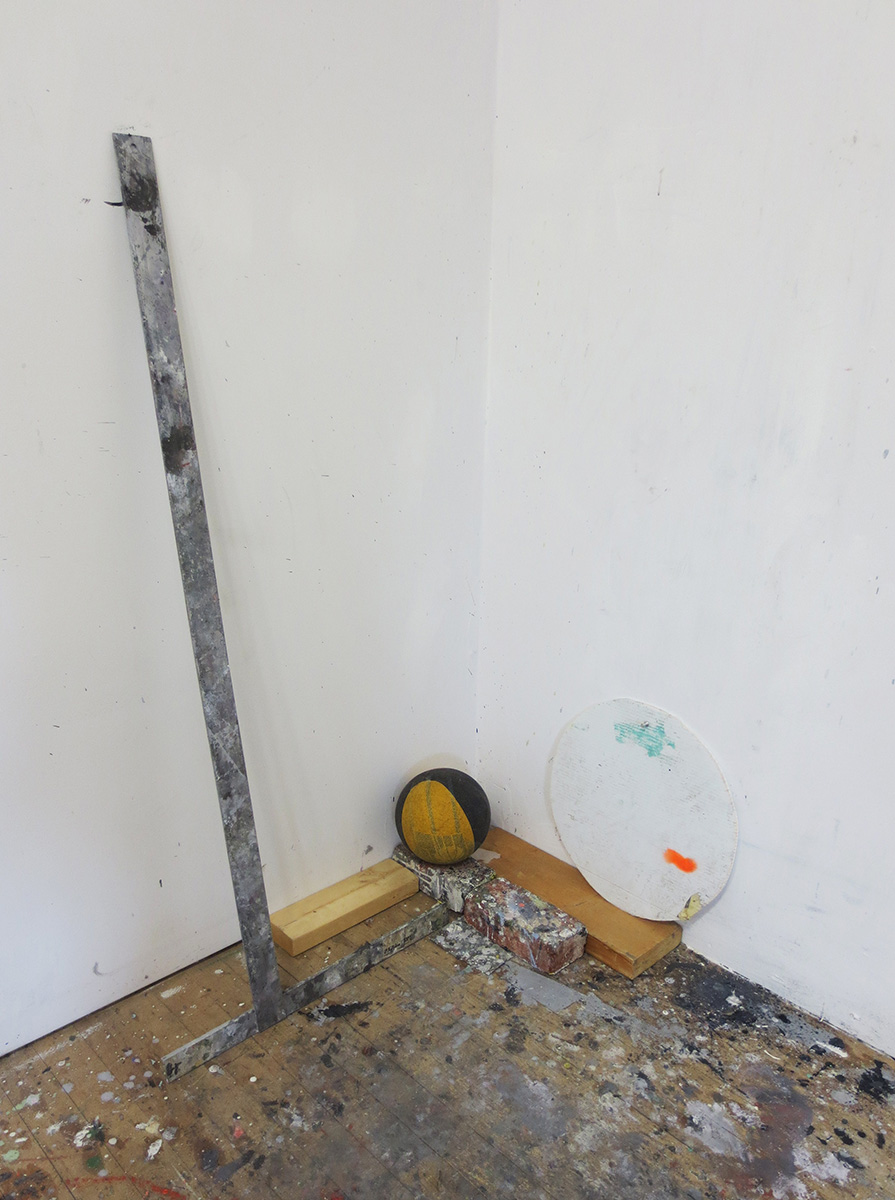
These are some of my tools. Here you see a ruler that I use to draw lines on larger paintings, and I use the round plastic disc to make arcs and circles. And, the ball is my nephew’s. He comes to the studio for a visit usually every other Sunday. We hang out and play music and kick the ball around and paint. I want him to have the same experience I had growing up with a father who was an artist, and my grandfather, too. He likes it. We’re recording a little techno album for him, and he’s really good at the music.
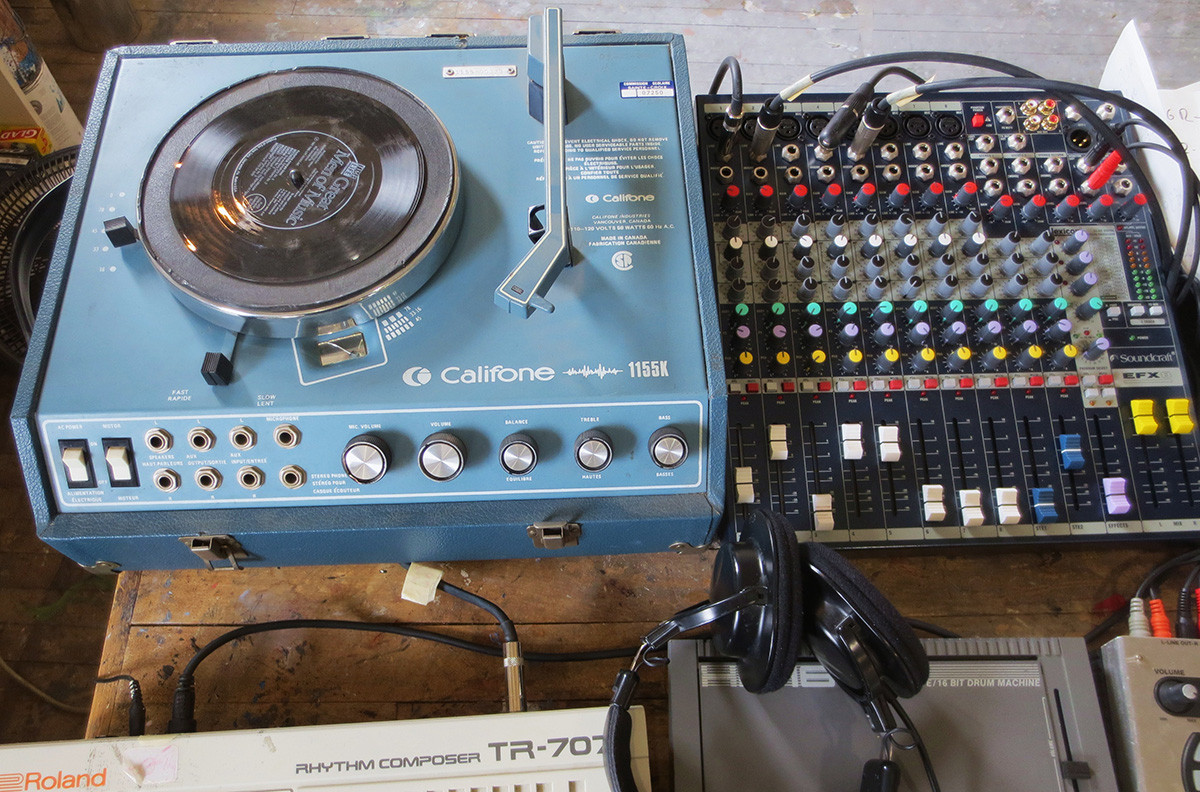
I used to be in a duo that made electronic music, and I was really into recording and performing, but I’ve been concentrating on visual art the last two years. Since I’m between shows right now, though, I’ve gotten back into it. The Califone was a common turntable in primary schools, so I went back to my school to see if they still had any. They didn’t, but they gave me the name of the guy who used to repair them. He had about 30 lying around and he gave me all of them. I really like the sound, and use them to make noise installations. The record is one of those Time-Life nature sounds flexi-disks. I’ve been picking up records that don’t have music or vocals on them, just sounds. And, my grandmother used to work at a flea market and she found the Roland drum machine some time in the 90s and gave it to me. As with painting, I can get lost in all the possibilities of music-making. Although I have all these tools and possibilities, I sometimes feel freer when there are some limitations.
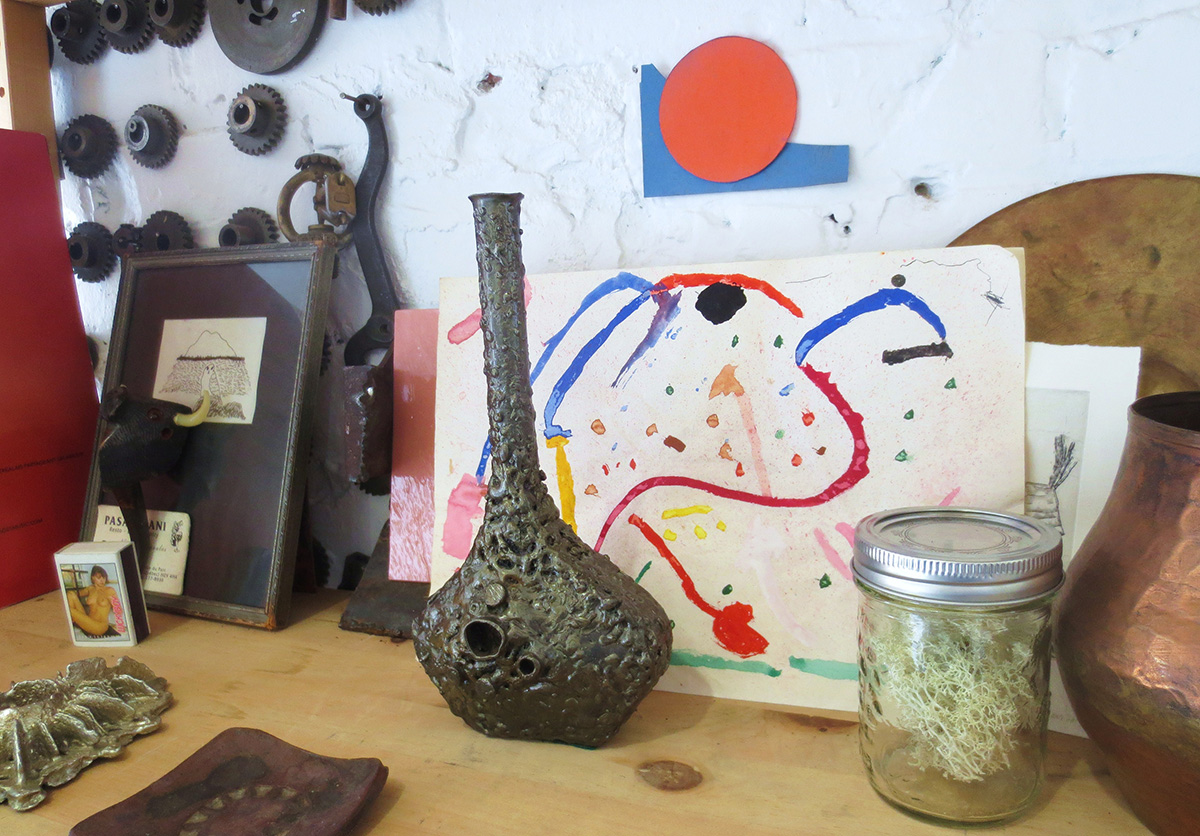
My mom says the painting pictured here is one of the first I made as a kid. It is still kind of what I do, networks of lines and shapes! Things are so pure and free when you’re young. You don’t judge things immediately and let things flow. This painting reminds me to find balance between having discipline and being free. All the gears on the wall were here when I moved in. I think they’re parts for large sewing machines; this building used to be a textile manufacturer. I kept them because they’re nice objects and part of the building’s history. There’s a few things from my grandfather, too. The vase in front is by a friend of his. I’ve always liked it. The small sculpture in the lower left is by my grandfather, too.
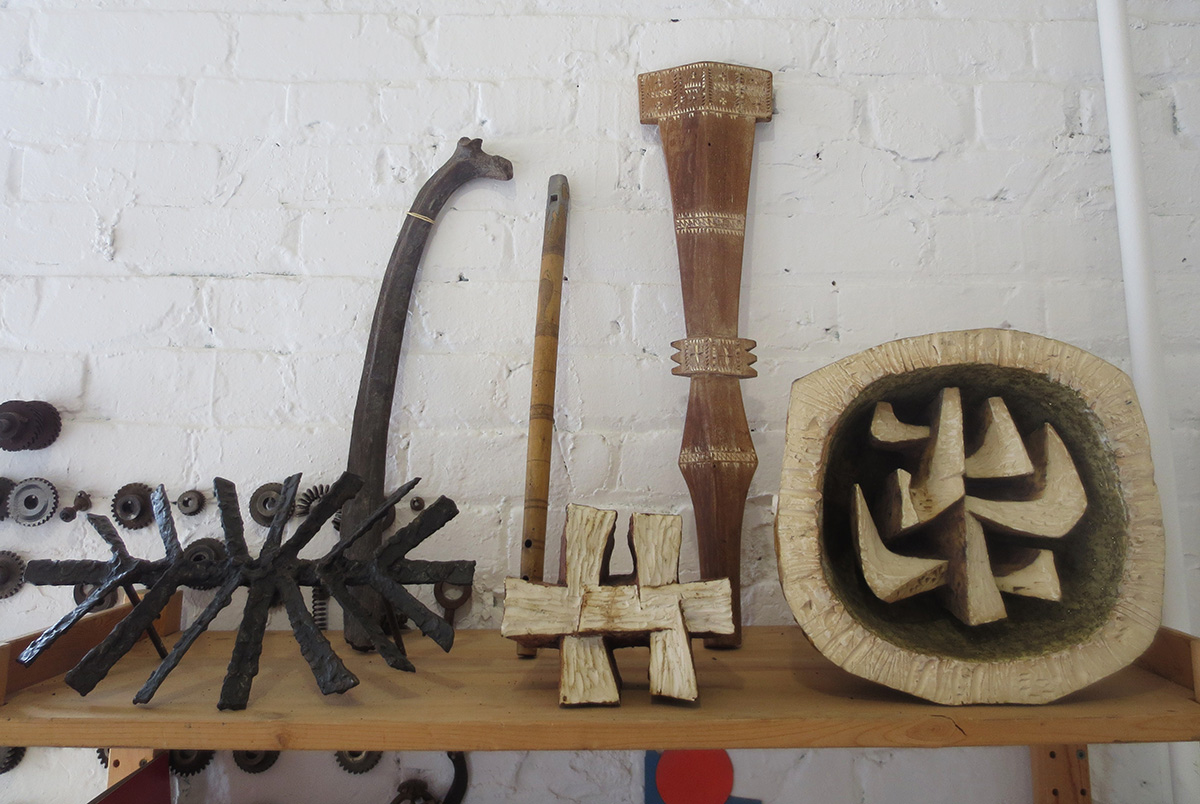
The three pieces in the front are by my grandfather for a mural he did for a bank around 1970. It was torn out to make room for elevators, but the bank contacted him and let him retrieve some of the relief parts of the mural. My grandfather was prolific and was like my art teacher and mentor. I quit school at 16, started to paint at 18, and didn’t go to art school. Even though he was a bit of a loner, my grandfather would always come to see what I was doing. I was happy to hear his more classical opinions about art as I messed around and tried to figure things out. All of these objects keep me connected to that time in my life and to him.
Bill Clarke was the Executive Editor of Magenta Magazine Online from its inception in September 2009 until May 2017. His writing has been published in Modern Painters, Art Review, Canadian Art, Artnews and several other publications. In January 2017, he assumed the position of associate director at Angell Gallery in Toronto.



